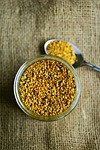
Did you know????
There is a process for the certification and labeling of organic foods.
In 1990, the United States legislature passed the Organic Foods Production Act. It assured the standardization the use of terms such as “organic” and “natural.” This act established a US Natural Organic Standards Board (NOSB).
Regulations were further promulgated by the US Department of Agriculture (USDA) in conjunction with the NOSB, so that today there is a set of standards that guide the entire industry. For example, NOSB defines organic agriculture as “an ecological production management system that promotes and enhances biodiversity, biological cycles and soil biological activity. It is based on minimal use of off-farm inputs and management practices that restore, maintain, and enhance ecological harmony.”

NOSB states that the primary goal of organic agriculture is to “optimize the health and productivity of interdependent communities of soil, plants, animals and people.” This standard is applied and followed by all entities accredited by the USDA.
There are several levels of labeling for organic foods, ranging from “100% organic,” (contents of 100% organically produced products), “organic” (contents of 95% organically grown products), and “made with organic ingredients” (contents 70% organically produced). A USDA seal of Certificate of Organic Ingredients can only be used, however, for products which contain 70% of more of organically produced contents.

Consumers, beware of products marketed and advertised as organic but do not meet the USDA standards and proof of certification. It does not necessarily mean the product is defective or poor, but it may not meet the important standards of “organic and natural” that you are seeking.
Check for quality organic products and more helpful articles at www.greatorganicproducts.com
